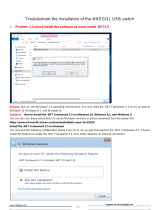
Citrix Certificates ..................................................................................... 23
Customized login screen ........................................................................... 23
Screen background customization ............................................... 23
Login dialog customization ......................................................... 30
Saving profiles ........................................................................................................ 32
Parallel and serial printer porting .............................................................................. 32
Automatic intelligence ............................................................................................................. 33
Viewing your HP Smart Client Service website ............................................................ 33
Automatic Intelligence directory structure .................................................................... 34
MAC address-based profile ...................................................................................... 34
Updating thin clients ................................................................................................ 35
Broadcast update ..................................................................................... 35
DHCP Tag setup on Windows Server 2003/2008 for Automatic Intelligence
update .................................................................................................... 36
Manual update ........................................................................................ 39
HP Intelligent Delivery Service .................................................................................................. 41
HP Device Manager ............................................................................................................... 43
3 Client Usage ................................................................................................................... 44
Demo mode (no server configured) ........................................................................................... 44
Connections .......................................................................................................................... 45
RDP ....................................................................................................................... 45
ICA ....................................................................................................................... 45
VMware View ........................................................................................................ 46
Four GUI buttons .................................................................................................................... 47
Shutdown/restart .................................................................................................... 47
Control panel ......................................................................................................... 48
System information .................................................................................................. 50
Status tab ................................................................................................ 51
Network tab ............................................................................................ 52
Net Tools tab ........................................................................................... 53
System Information tab .............................................................................. 54
System Logs tab ....................................................................................... 54
Status icon ............................................................................................................. 55
USB boot .............................................................................................................................. 55
Download image off web ......................................................................................... 55
Reimage device ...................................................................................................... 55
Retrieving System Diagnostics .................................................................................................. 57
What is System Diagnostics? .................................................................................... 57
Saving System Diagnostics ....................................................................................... 57
Opening System Diagnostics .................................................................................... 58
vi





















